HISTORY
A BRIGHT NEW ENGLAND
TOWN IN CENTRAL FLORIDA
BY RANDY NOLES AND STEVE AND GAIL RATJAR
The very earth is lyric
With red hibiscus bloom;
The flame-vine and azalea
Are threads on beauty’s loom.
The orange trees shed incense
Along the common road,
Then bow them down in worship
Beneath their golden load.

Edwin Osgood Grover, who rhapsodized so eloquently about Winter Park in the 1930s, was an acclaimed poet and Professor of Books at Rollins College. Like many Winter Parkers, his roots were in New England. Yet he fell in love with this sophisticated, subtropical paradise, where beauty, education and the arts were celebrate
Grover’s poem, “Lyric Florida,” vividly describes the area as it would have looked during his tenure at Rollins. But it also would have been accurate a half century earlier or a half century later.
Winter Park is still lush with foliage and, at certain times and in certain places, the warm air still carries the scent of citrus. It is still a place where a quirky professor and an unorthodox artist can sip coffee at a sidewalk café alongside a matronly clubwoman and a straight-laced stockbroker.
Founded as a getaway for Northeastern tycoons, today’s Winter Park is considerably more egalitarian than its developers probably expected or intended. Although a Winter Park address carries considerable panache, most residents are not millionaires. The average household income is about $104,000 versus just over $73,000 statewide. It is an impressive number, to be sure, but a neighboring Orange County community, Windermere, is far ahead at $175,000-plus.
Money, however, is not the only measure of a community’s worth. Although Winter Park was advertised as a refuge for “men of means,” early promoters also envisioned a place that was enlightened, welcoming and, to use a more modern term, livable.
In that regard, today’s Winter Park remains remarkably true to their vision.
PIONEER DAYS
Prior to the 1850s, the area that would become Winter Park had few permanent settlers. A rough-and-tumble character named David Mizell Jr., large family in tow, arrived in 1858 from Alachua County, near Gainesville, and bought an 8-acre tract between present-day Lakes Virginia, Mizell and Berry, where he built a cabin and began farming and raising cattle.
Mizell named his homestead, appropriately, Lake View, which was also adopted as the name of the fledgling settlement that formed around it. In 1870, Lake View got a post office and a new name, Osceola, in honor of the Seminole warrior who had died in American captivity more than 30 years earlier.
In the late 1860s, Mizell was elected to the Orange County Commission and the state Legislature. His eldest son, also named David, was appointed Orange County sheriff, while another son, John, served as a judge of the Orange County Court.
The legendary sheriff, who was killed in 1870 while trying to settle a dispute over the sale of two cows, is buried in a small family plot just beyond the entrance to what is now Harry P. Leu Botanical Gardens in Orlando. Father and son are often confused in local histories, but it is the elder Mizell who was arguably Winter Park’s earliest non-native pioneer.
A few years later, Wilson Phelps of Chicago visited the area and was entranced by its thick woods and shimmering lakes. In 1874 he bought a sizable tract, including a large part of the Mizell homestead, and began selling lots to fellow Chicagoans.
The following year, Phelps built his own home, a rambling cracker farmhouse in the midst of a 60-acre orange grove hugging the shores of Lake Osceola. Interestingly, part of the Phelps home survives as a wing of the Queen Anne-style Comstock-Harris House, otherwise known as Eastbank, which was built in 1883 by William Comstock, a wealthy grain merchant who also hailed from the Windy City.
Eastbank is today the city’s oldest home, and one of only three listed on the National Register of Historic Places.
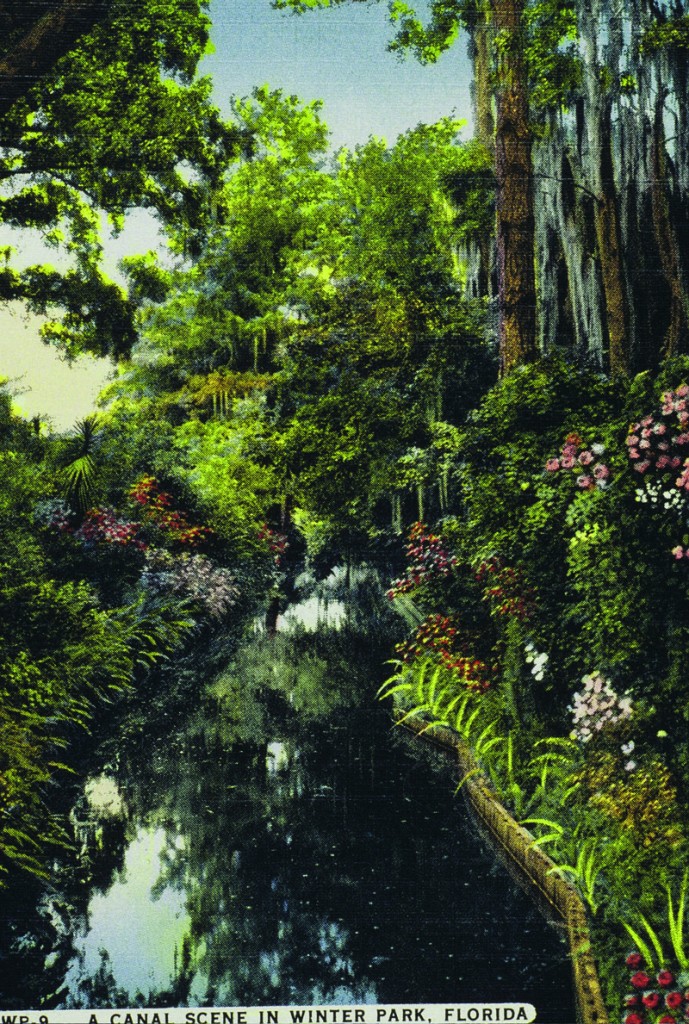
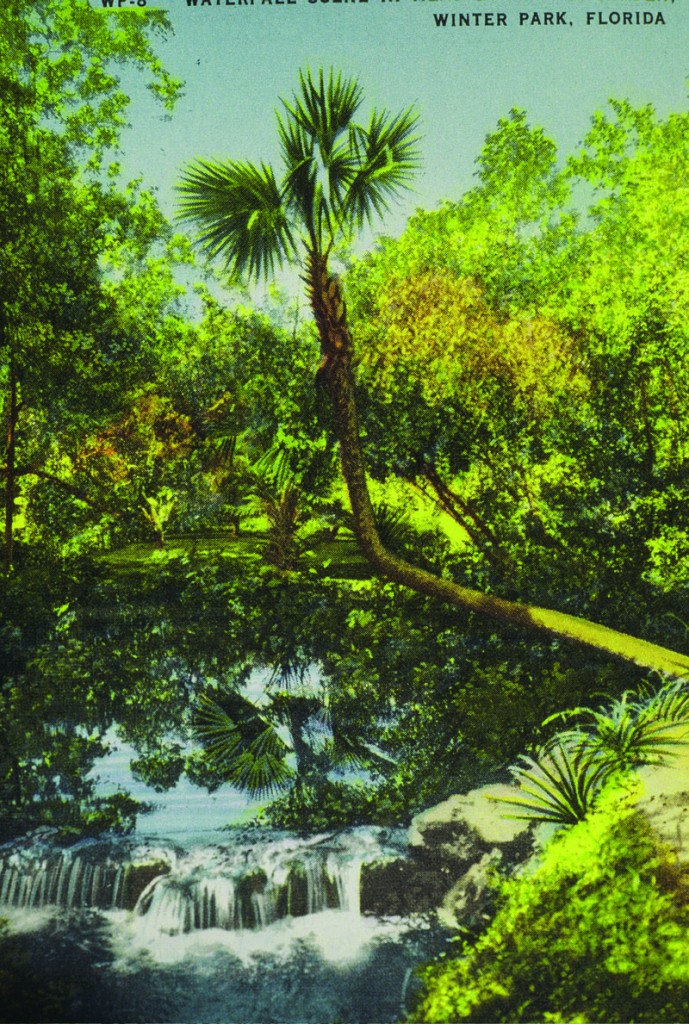
Postcards from the early 1940s showcase a picturesque canal connecting Lakes Virginia and Mizell (top) and a secluded pond at Mead Botanical Garden (bottom). The city’s canals, now frequented by sightseeing boaters, were originally dredged to transport building materials. The garden, named for world-renowned horticulturist Theodore L. Mead, began as about 50 pristine acres of hammocks and wetlands.
NORTHERN EXPOSURE
The 1880s were pivotal years, and saw the reshaping of a haphazard frontier settlement into what today would be called a master-planned community.
A major catalyst was completion in 1880 of the South Florida Railroad, which connected Orlando with Sanford and continued through to Tampa. The effort to snare the state’s first post-Civil War rail line was led by developer Edward Henck, one of Longwood’s first settlers and a tireless advocate of the town’s growth. The project was bankrolled by R.M. Pulsifer of Pulsifer & Company, owner of the Boston Herald, whom Henck had personally solicited for support.
But it was not Longwood that fired the imagination of Loring Chase, a New Hampshire native who was raised in Massachusetts and lived in Chicago. Harsh winters did not agree with the hard-working real estate broker, whose doctors had advised him to seek a warmer climate to alleviate his chronic respiratory problems.
Chase, who first visited the area in February 1881, was particularly smitten by the land surrounding Lakes Osceola and Virginia. “Never will the delightful impression of that first visit be obliterated from my mind,” he recalled in a speech 10 years later. “Before me lay these beautiful rolling plains, covered everywhere by majestic pines, forming, not an impenetrable forest but a vast grove through which we could drive our team at will.”
The land, although beautiful, was basically wilderness. “Save two faint streaks of iron, over which a box car went slowly once a day between Sanford and Orlando, and a rude platform and two or three windowless cabins of the original homesteaders, no sign of civilization greeted the eye,” Chase recalled.
Still, once a real estate man, always a real estate man. Where some saw wilderness, Chase saw a winter resort for wealthy Northerners. “The idea of a town … on this delightful spot took full possession of me,” he said. Chase believed his boyhood friend, Oliver Chapman, would be an ideal partner in such a venture.
Chapman, a Massachusetts-born importer of luxury goods, had moved to Florida in 1880 and lived in Sorrento, a small settlement in what is now Lake County. The pair met in Sanford and set out to visit the property, which was then owned by B.R. Swoope, superintendent of the South Florida Railroad.
Chapman, like Chase, recognized an opportunity when he saw it. By July 1881, they had bought 600 acres between present-day Lakes Maitland, Virginia, Killarney and Osceola. The cost: $13,000, the equivalent of about $290,000 today. Then, while in the vicinity, they sought validation from none other than Phelps, who had already enjoyed success marketing the area to out-of-staters.
Phelps, who undoubtedly saw in Chase and Chapman an opportunity to increase the value of his own investments, could hardly have been more enthusiastic and encouraging. He claimed that, prior to relocating to Central Florida, he was “nearly dead with bronchitis of 30 years standing” as a result of living in New York, Ohio and Illinois.
In a four-page, handwritten letter dated Aug. 12, 1881, Phelps raved about “the beneficial effects of this climate” and even offered to provide the names of other residents, including Comstock, his neighbor, who would confirm his statements about the area’s health benefits.
A one-man chamber of commerce, Phelps, then an energetic 59 years old, also provided Chase and Chapman with an almanac of information, including average year-round temperatures. He described the soil as well-suited for growing citrus, noting that Central Florida was “below the frost line.” The land was beautiful and, in his opinion, would continue to rise in value.
Their confidence bolstered, the entrepreneurial New Englanders officially named their holdings Winter Park — a logical decision, since they felt that the words “winter” and “park” would be appealing to potential relocators — and quickly had the land surveyed, platted and mapped.
Chapman and Chase clearly made an effective team. A newspaper article from 1886 called Chapman “cool, quiet, level-headed and judicial in his makeup, but once his mind is made up, he never relaxes his grip until his end is accomplished.” Chase, on the other hand, was described as “a rustler, quick to grasp, vigorous to act and relentless in his efforts.”
MASTERFUL PLANNING
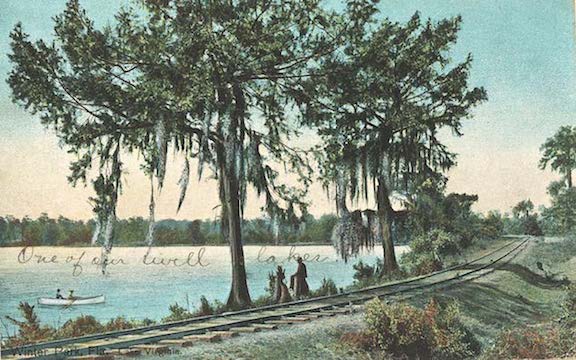
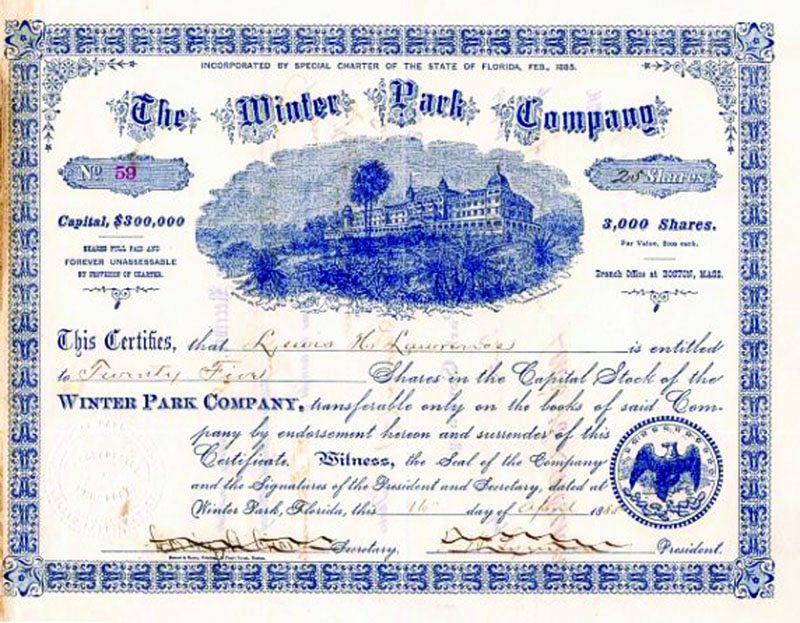
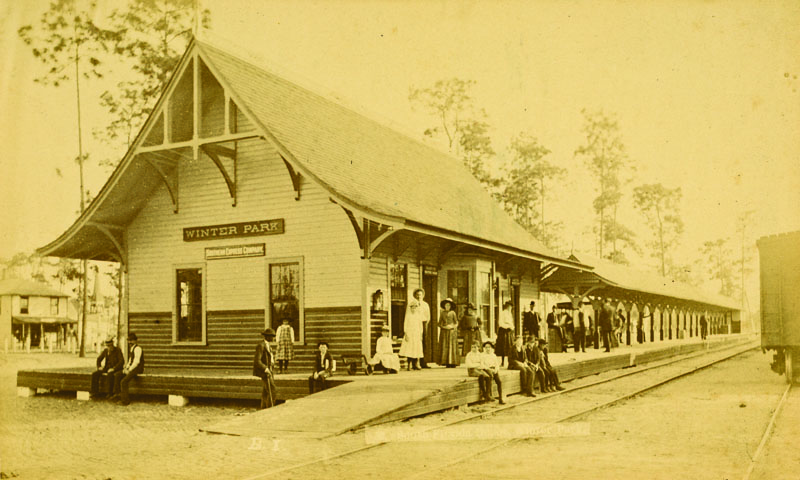
The two promoters, unlike some others touting Florida real estate deals, were genuinely passionate about creating a special place. The town plan, designed by civil engineer Samuel Robinson, included a central park fronted by lots for commercial buildings as well as tracts for schools, hotels and churches. Curved streets radiated out from the town center.
Remarkably, Winter Park today looks very much like the original town plan envisioned that it would. Indeed, Robinson’s work could serve as a template for present-day planners responsible for so-called New Urbanist communities such as Baldwin Park and Celebration. There is, however, one key difference.
Establishing a precedent for segregation that would endure for generations, the plan designated a west side tract, dubbed Hannibal Square, for African Americans. After all, “men of means” would need a labor force to work in their groves, homes and hotels. So, 38 small residential lots were made available to “Negro families of good character.”
In fact, Winter Park was a relatively enlightened place, particularly for the Deep South. Many of its early boosters, well-educated Northeastern Republicans, would have held views on race relations that were liberal for the time. In the aftermath of Reconstruction, given the limited options open to them, many displaced former slaves considered it an attractive place to live and work.
Chase, in particular, strongly advocated education for all races and was outspoken in his belief that African Americans should be active participants in local government. In 1890, during dedication ceremonies for a school in Hannibal Square, he delivered a speech that would have sounded just as timely during the Civil Rights movement of the next century.
“Knowledge is power,” Chase thundered. “Get knowledge and you shall command the respect of those who would count you out. Then you may stand erect, though your skin may be black, and say, ‘I, too, am a free, intelligent citizen with a thought of my own in my head and a ballot in my hand and I demand recognition and a voice in the management of affairs.”
In the meantime, the marketing campaign orchestrated by Chase and Chapman was working. Winter Park’s population grew from about a dozen scattered families in 1881 to more than 600 people by 1884. The first commercial building, a railroad passenger depot, was completed early in 1882, followed by the town’s first hotel, the Rogers House, located on Interlachen Avenue.
Park Avenue’s first commercial building came next. The two-story structure, which is still standing at the corner of Park Avenue and Morse Boulevard, housed the Pioneer Store, with John Ergood and Robert White as proprietors. The second floor was used for social functions, church meetings and civic gatherings. Consequently, locals soon began referring to the first-floor general mercantile store as Ergood & White and to the building in its entirety as Ergood’s Hall.
Shortly thereafter, downtown Winter Park encompassed a bakery, a watchmaker, a saw mill, a wagon factory, an ice house and a combination livery stable and blacksmith shop.
Judge Lewis H. Lawrence, a wealthy boot and shoe manufacturer from Utica, New York, sent the first telegraph message from Winter Park on Jan. 1, 1883, to his friend, President Chester A. Arthur. It read, “Happy New Year. First message from office opened here today. No North. No South.”
Prominent people began making the trek southward to visit their wealthy friends. One was President Arthur, who visited Lawrence and declared Winter Park to be “the prettiest spot I have seen in Florida.” He had said essentially the same thing about Sanford the day before, but the sentiments likely were sincere.
Some stayed and made more enduring civic contributions. Minneapolis businessman Frederick Lyman, who retired to Winter Park in 1882, led the effort to found what is now the First Congregational Church of Winter Park. Congregationalism is a progressive denomination whose New England roots appealed to Winter Park’s substantial Northern contingent.
The church’s first pastor, Dr. Edward Hooker, arrived from Massachusetts in 1883 and quickly mobilized an influential flock. Led by Lyman and Hooker, funds were raised to build a sanctuary, the town’s first, on New England Avenue in 1885.
Congregationalists, who consider education to be as much a part of their mission as spreading the gospel, founded some of the first colleges in the U.S., including Harvard, Yale and Dartmouth.
Adhering to that tradition, the Winter Park church and its members, many of whom were driven by both financial and altruistic motives, acted quickly to bring an institution of higher learning, the first in Florida, to their small but ambitious town.
AN EDUCATED GAMBLE
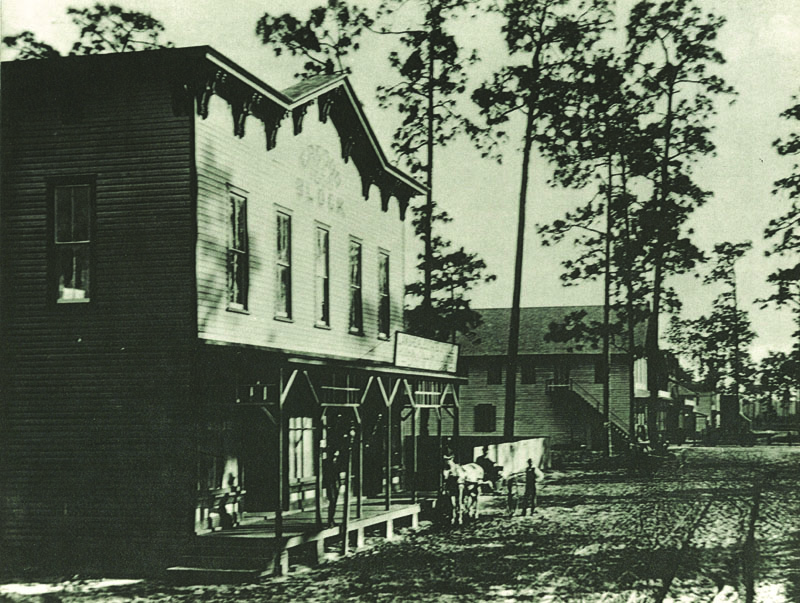
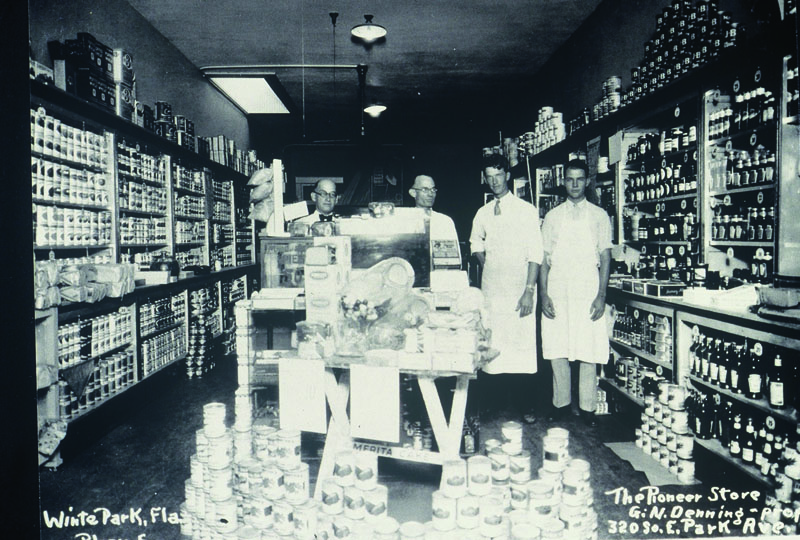
The opportunity came in 1884, when the General Congregational Association of Florida met, prophetically, in Winter Park. Among those pushing for a church-related college in Central Florida was a remarkable woman named Lucy Cross, an Oberlin College graduate who lived in Daytona and founded the Daytona Institute for Young Women in 1880.
Cross discussed her notion with the Rev. C.M. Bingham, a Congregationalist minister in Daytona. At the assembly, Bingham presented a paper written by Cross on the formation of a college “for the education of the South, in the South.” In it, Cross posed a challenge disguised as a question: “I ask you gentleman to discuss thoroughly the question, ‘Shall an effort be made to found a college in Florida?’”
In response, delegates asked Hooker to prepare a report on education in Florida, to be presented at the 1885 annual meeting in Mount Dora. Hooker, who had been appalled at the crudeness and ignorance he had encountered in Central Florida and worried about the role the church should play in “building a wholesome order” in the area, took his assignment seriously.
The paper, read by Hooker at the subsequent association meeting in January 1885, was entitled “The Mission of Congregationalism in Florida.” He began by summarizing what he called “Congregationalism’s mission of Christian education.” Then he directly and forcefully addressed the issue Cross had raised.
No area of the nation, Hooker insisted, was more in need of a college. Europeans had arrived in Florida 50 years before the Plymouth settlement, he noted. Why, then, should Florida be so far behind New England?
Hooker also argued that the growth and prosperity of Florida depended just as much on education as agriculture. Businesspeople from other parts of the country would not invest in Florida if there were no educational opportunities for their children, he warned.
Spurred to action by Hooker’s presentation, the association adopted a resolution agreeing with its premise and appointing a committee of five members, including Hooker and Lyman, to receive “inducements” for the location of a college. Those inducements, it was determined, would be unveiled and evaluated at a special meeting in April.
Church leaders then solicited offers from civic leaders who wanted the institution in their towns. Among the respondents: Mount Dora, Daytona Beach, Jacksonville, Orange City and Winter Park, where the indefatigable Lyman was already hard at work raising funds.
The competition was fierce. An article in the Florida Times-Union in Jacksonville, at the time the state’s largest city, suggested that it was a bad idea “to locate colleges in out-of-the-way places, and in sparsely settled communities.” Perhaps, but Winter Parkers knew that their town would not be an “out-of-the-way place” for long, and that a college would boost its profile and its prestige immeasurably.
When the association reconvened, it reviewed the five proposals. Lyman’s and Hooker’s membership on the committee worked to Winter Park’s advantage; they arranged to have their proposal presented last so they could gauge the strength of the other inducements.
Mount Dora offered cash, lumber and land in a package valued at $35,564. Jacksonville and Daytona offered $13,000 and $11,500, respectively, along with tracts of land for a campus. Orange City committed about $25,000.
Lyman would later write: “As one proposal after another was read, it became evident to me … that [the] other towns were hopelessly outdistanced, and I was correspondingly elated but managed to maintain a calm exterior, perhaps even to assume an aspect of gloom, which was misleading,”
Winter Park’s offer, which encompassed stock, land and cash in a package valued at $114,180, shocked its competitors. Some $50,000 of that amount was pledged by Alonzo Rollins, a Maine native who made his fortune in Chicago selling dyes to woolen mills before retiring to Winter Park for health reasons.
Competitors howled that Winter Park’s Lake Virginia site was basically a swamp, prompting delegates to visit and see for themselves before making a final decision. Three days later, after judging the land to be high and dry, the association voted to accept Winter Park’s offer and to appoint 21 charter trustees. Shortly thereafter, the trustees adopted a constitution and bylaws and named the institution for its primary benefactor.
Hooker, as he had likely hoped, was appointed the first president of Rollins College. Cross, who had presented Daytona’s case before the association, became known as “The Mother of Rollins,” and today the college’s Lucy Cross Center for Women and Their Allies keeps her name at the forefront in a way that surely would have pleased her.
Rollins himself, who ironically never earned a college degree, attended two annual meetings of the Board of Trustees before he died in 1887.
MAKING IT OFFICIAL
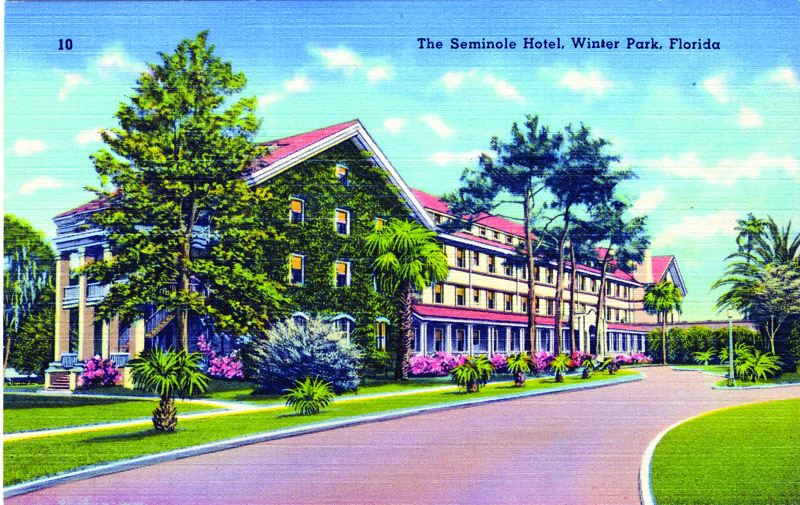
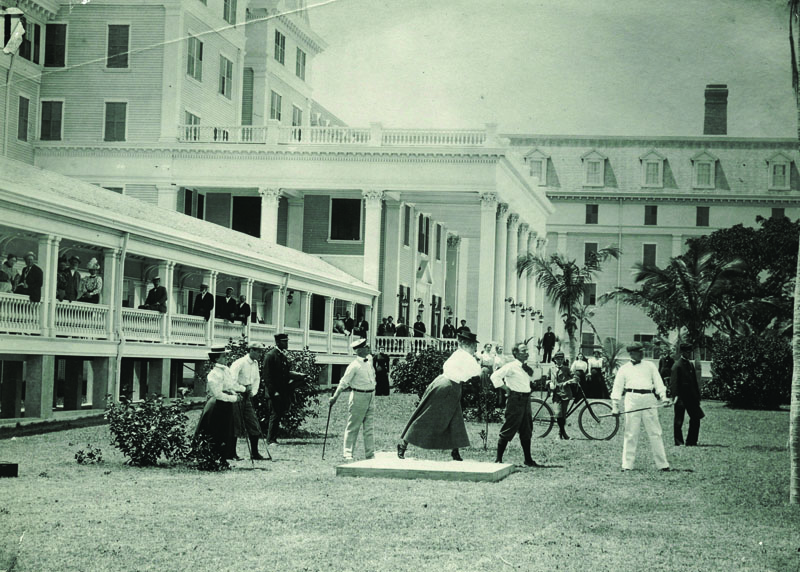
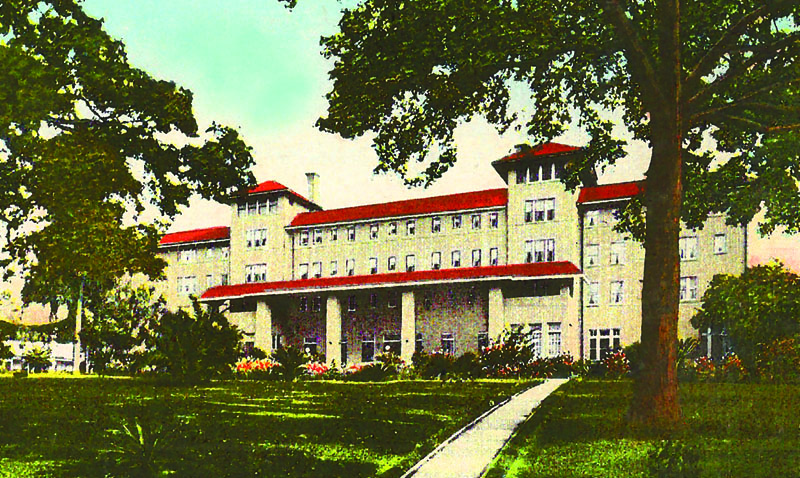
Lyman, not content to rest on his laurels, quickly set his sights on another opportunity. He approached Chase and offered to buy his holdings through a combination of cash and stock in a new entity, the Winter Park Company. Chase, who had bought out the ailing Chapman in 1885 for $40,000, agreed.
Shareholders in the Winter Park Company included prominent citizens whose names will still be familiar to anyone who drives regularly along the city’s streets: In addition to Lyman, Chase and Rollins, partners included F. G. Webster, William Comstock, J. F. Welbourne and Franklin Fairbanks.
Among the company’s powers were laying out roads, buying and building hotels and “the sole and exclusive right to build, equip, maintain and operate a street railway or railways.” One of its first acts was to borrow $150,000 from Francis Knowles, a retired Massachusetts industrialist, to build the 400-room Seminole Hotel, a luxurious resort between Lakes Osceola and Virginia boasting steam heat and private bathrooms.
The hotel, which was the largest in the state when it opened in 1886, was served by two yachts, the Alice, which launched on Lake Osceola, and the Fanny Knowles, which launched on Lake Virginia. Guests could listen to an orchestra, use the bowling alley or play tennis and croquet. Fishing on the surrounding lakes was also a popular pastime.
The Winter Park Company also built a mule-drawn streetcar line, known as the Seminole Hotel Horse Car, along New England Avenue west to the railroad depot. That first winter season, there were more than 2,300 registered guests. President Grover Cleveland visited in 1889 followed in 1890 by President Benjamin Harrison.
Northern newspapers were taking notice. In an 1896 dispatch headlined “A Bright New England Town in Central Florida,” an unnamed New York Times reporter described Winter Park as “one of the neatest, cleanest and prettiest towns in Florida, with street after street lined with handsome, modern cottages and larger homes.”
The scribe, who stayed at the Seminole Hotel and was accorded red-carpet treatment during his visit, took special pains to mention that Winter Park’s homes were painted, unlike those in other Florida cities “where the use of paint is apparently totally unknown.”
As a growing cadre of moneyed Northerners built homes and opened businesses, Hannibal Square was becoming a vibrant community in its own right. Assisted by the white Congregationalists, a black Congregational church was built in 1884. Methodist and Baptist Missionary churches followed. There was also an elementary school and a bustling commercial district.
One prominent African-American entrepreneur, Gus Henderson, moved to Winter Park from Lake City in 1886 and founded the South Florida Colored Printing & Publishing Company. He became involved in Winter Park civic affairs, founded a weekly newspaper called The Winter Park Advocate and encouraged his friends and neighbors to support the Winter Park Company’s newly announced plans to incorporate.
Nearly everyone thought that incorporation was a wise step. The issue became mired in controversy primarily because some white residents opposed having Hannibal Square included in the town limits. An article in Lochmede, another Winter Park newspaper, noted that there was considerable consternation over the idea of “residents who did not own land — and who were primarily black — levying taxes upon landowning residents from which they themselves would be exempt.”
Some Hannibal Square residents did indeed rent land from the Winter Park Company, which also employed them as laborers. Others, however, were homeowners and taxpayers. Henderson argued that it made no difference. Every registered voter, regardless of whether or not he was a landowner, had a right to be heard on this important issue.
Further complicating matters, local Democrats feared that the inclusion of Hannibal Square and its solidly Republican voting bloc would skew the balance of political power. In fact, at the time there were more black voters (64) than white voters (47) in Winter Park. Surely the idea of African Americans holding a voting majority was unsettling to some, even in a community where racial harmony generally prevailed.
On the afternoon of Sept. 10, 1887, only 57 registered voters — almost all white — showed up at Ergood’s Hall for a meeting to decide on incorporation. A quorum, however, required a minimum of 73 attendees. Only five more registered voters could be rounded up for a second meeting later that evening. Because no action could be taken, another meeting was called for Oct. 12.
Why had black voters stayed away? Winter Park businessman J.C. Stovin, a native of England who favored incorporation but opposed including Hannibal Square, had convinced many west side residents that incorporation was a ruse to make them pay high taxes and lay bricks on city streets.
Henderson and others went to work, going door to door and pleading with their friends and neighbors to exercise their rights as free citizens and attend the next incorporation meeting. It was certainly pointed out that the principals of the Winter Park Company, particularly Chase, had treated blacks fairly, even compassionately, and should expect their support in return.
A curfew forbade blacks from crossing the railroad tracks that divided east from west after nightfall. But on the evening of Oct. 12, Henderson led a group of black registered voters from Hannibal Square directly to Ergood’s Hall. Some accounts claim that a band and children waving banners accompanied the west side delegation.
In any case, a quorum was achieved and incorporation — with Hannibal Square included — was approved by a vote of 71 to 2. In addition, two black men, Walter B. Simpson and Frank R. Israel, were elected aldermen. They were the first, and the last, black elected officials in Winter Park. White, of Ergood & White, was elected as the first mayor.
The union of Hannibal Square and the Town of Winter Park was to be temporary, however. In 1893, Comstock led an effort by Democrats to remove the west side neighborhood from the town limits. Although Winter Park officials refused to change the boundaries, the Florida Legislature did so over their opposition.
“It is, in my opinion, a scheme originated by those who desire to run the town government and feel that their only chance is to take out the mass of the colored voters,” said a letter writer to the Advocate.
Hannibal Square was not a part of incorporated Winter Park again until 1925, when local leaders sought to change its status from town (fewer than 300 registered voters) to city (300 or more registered voters).
Immediately on the heels of incorporation, the Town Improvement Association, later renamed the Winter Park Village Improvement Association and ultimately the Winter Park Chamber of Commerce, was organized with the goals of planting trees, repairing sidewalks, maintaining parks and encouraging residents to be sociable.
Also in the active 1880s, a reading circle of nine women led by Hooker’s wife, Elizabeth, began an effort to establish the Winter Park Circulating Library Association. The small collection of books was placed in the home of a reading circle member until the library got its own facility, on an Interlachen Avenue site donated by the Knowles estate, in 1902.
In 1889, J. Harry Abbott debuted the Orlando-Winter Park Railroad, more commonly referred to as the Dinky Line, a nickname sometimes given to short-haul rail operations. The bumpy, smoky 6-mile trip between Orlando and Winter Park took about a half-hour and cost 15 cents. The two engines were known as the “Tea Pot” and the “Coffee Pot,” and the train itself was the “Little Wiggle.”
Cute and quirky though it was, the Dinky Line’s popularity waned as roads were improved and automobiles proliferated, although it managed to hang on until the last tracks were removed in 1969. Today, the site of the Dinky Line’s depot is a public park and swimming and fishing pier on Lake Virginia known as Dinky Dock.
As the 1880s drew to a close, Winter Park had attracted 250 families and 600 residents, many of them seasonal, from 29 states and five foreign countries. The Massachusetts and Illinois contingents were the largest but New York and Georgia were also well represented.
According to an 1889 promotional brochure for the Seminole Hotel, occupations of those residents included “lawyers, judges, army and navy officers, civil engineers, college professors, journalists, physicians, ministers, manufacturers, bishops, merchants, bankers, millionaires, etc.”
There would, however, soon be a winnowing of millionaires.
COLD AND COLDER


In a region that was supposed to be below the frost line, two freezes hit in consecutive years, 1894 and 1895. The first was damaging but the second was ruinous, wiping out citrus groves and devastating the economy. During the second freeze, temperatures dipped to the coldest ever recorded up to that time. Sap froze inside tree trunks, splitting many of them open with pops sounding like gunshots.
Even the financial wizards who comprised the Winter Park Company were not immune. After defaulting on loan payments to the estate of Knowles, who had died in 1890, they were forced to transfer ownership of roughly 1,200 lots to satisfy the debt. Adding insult to injury, the Seminole Hotel, which had been financed by a loan from Knowles, burned to the ground in 1902.
Enter Charles Hosmer Morse, a Chicago industrialist and recent widower who enjoyed passing icy winters ensconced at the Seminole Hotel. In 1904 Morse formed the Winter Park Company, successor to the insolvent Winter Park Land Company, and bought the Knowles estate’s vast holdings for roughly $10,000, the equivalent of about $250,000 today.
The Knowles heirs, battered by declining property values and the collapse of the citrus industry, badly needed to sell. Consequently the transaction was a bargain for Morse, a millionaire at a time when there were only about 4,000 millionaires in the entire U.S. In addition to the Knowles properties, Morse snared 200 heavily wooded acres that encompassed the site of the Mizell homestead. Suddenly, one very wealthy man owned nearly half the town.
Clearly, had Morse been a less enlightened person, Winter Park would likely be a very different place today. Fortunately for future generations, however, the Vermont native was a visionary who insisted that enhancing Winter Park was far more important than profiting from it. He quickly strengthened his personal connection to the town by remodeling and expanding a home at the corner of Interlachen and Lincoln avenues and using it as his personal winter residence.
Under Morse’s supervision, the aptly named Osceola Lodge was transformed into a textbook example of Craftsman-style architecture and filled with custom Mission Oak furniture, walls of books and an array of rustic Indian artifacts. From this cozy and comforting setting Morse supervised development of his properties and quietly supported community causes.
Osceola Lodge still stands, and is today headquarters for the Winter Park Institute, a Rollins-affiliated organization that sponsors seminars, lectures, readings, classes and discussions with prominent scholars and thought leaders in an array of fields. The home and the adjacent Knowles Cottage serves as a study center for scholars-in-residence — a use that the urbane Morse would have appreciated.
In 1906 Morse deeded the land that is now Central Park to the town, but only so long as it was open to the public and not developed. He helped form the Winter Park Country Club and, for $1 a year, leased the organization land on which to build a clubhouse and golf course. The facilities, now owned and operated by the city, are still in use today.
Morse, who married a socially prominent New York widow named Helen Strong Pifford in 1910, also donated an Interlachen Avenue site on which the Woman’s Club of Winter Park built its headquarters. He funded numerous civic improvements out of his own pocket, anonymously paying for construction of a town hall in 1916 and for years routinely covering operating deficits as a member of the Rollins Board of Trustees.
Morse’s granddaughter, Jeanette Genius McKean, and her husband, Hugh McKean, later established the Morse Museum of American Art, a jewel in Winter Park’s crown that houses the world’s most comprehensive collection of works by Louis Comfort Tiffany.
In 1986, a memorial was erected in Central Park commemorating Morse’s contributions. The two-sided brick structure, designed by James Gamble Rogers II, is impressive. But Morse would undoubtedly have considered the thriving, culturally rich city that Winter Park has become to be the only monument to his memory that really mattered.
A NEW CENTURY


Park Avenue was, is and always will be the vibrant heart of Winter Park. In fact, as this image demonstrates, the city’s signature street looks much the same today as it did in the 1920s and 1940s. A few buildings even date from the turn of the last century or earlier. Consequently, the entire Downtown Winter Park Historic District was added to the National Register of Historic Places in 2011.
By the early 1900s, Winter Park’s founders were either dead or in their final years. Many of them ended up in the Palm Cemetery, resting beneath ground on West Webster Avenue donated by none other than Chase, the man without whom there might not have been a Winter Park.
The cemetery, which was for whites only when it opened in 1906, is notable for the fact that golfers on the adjacent municipal course must sometimes hit errant shots from around tombstones. Pineywood Cemetery had been established in 1890 for black residents. Both are now operated by the city of Winter Park.
In 1908, Jerry and Mary Trovillion and their 16-year-old son, Ray, arrived in Winter Park from Harrisburg, Ill., where Jerry, a medical doctor, had operated a sanitorium. The couple bought Maxon’s Drug Store, located in Ergood’s Hall, and renamed the business Trovillion’s Pharmacy. The mercantile store founded by Ergood and White, now owned by William Schultz Jr., had moved in 1900 to Park Avenue and Morse Boulevard.
The Trovillions prospered. Jerry installed a modern soda fountain in the pharmacy and began assembling an impressive portfolio of investment property. High-spirited Ray, meanwhile, tried to acclimate himself to living in what he found to be a rather stuffy community with an absurdly rigid code of behavior.
In a 1978 interview with the Winter Park Sun-Herald, the 86-year-old raconteur recalled running afoul of the law by playing horseshoes with friends near the railroad depot.
“Up rides our little town marshal on his big bay horse to inform us that we were under arrest … for pitching horseshoes on Sunday,” he said. “It was rough in those days. No golf or fishing on Sundays. Another law was you couldn’t buy gasoline or kerosene after dark.”
In 1912, a second Seminole Hotel was built at the foot of Webster Avenue. With 82 rooms, it was smaller than the original, but still attracted a discerning clientele. Among them: President Calvin Coolidge, who appears to have been characteristically silent about his Winter Park sojourn. The hotel stood until 1970, when it was demolished and homes were built along what is today Kiwi Circle.
Also in 1912, brothers B.A. and Carl Galloway were awarded a franchise for the Winter Park Telephone Exchange. In 1913, phone rates were $1 per month and there were a total of 35 operating telephones in Winter Park and Maitland.
The First Baptist Church of Winter Park was founded in 1913, and a new railroad depot opened along the west side of the tracks facing Morse Boulevard. In 1915, the fire department bought a fire wagon pulled by a single horse. The horse lost its job the following year, replaced by a motorized vehicle. The Woman’s Club was organized in 1915, and the building that the club still uses was completed in 1920.
The red-brick Winter Park Graded School, later known as Park Avenue Elementary School, opened in 1916 at the southeast corner of Park Avenue South and Lyman Avenue. Initially there were 150 students in 11 grades. Twelfth-graders attended classes at the Rollins Academy until the school was expanded several years later.
The building was bought by Rollins in 1961 and used for the college’s continuing education programs until 1988, when it was razed despite emotional appeals from former students and local history buffs. Today the 400 block of Park Avenue encompasses a Mediterranean-style office and retail complex. A plaque installed by Rollins is the only indication that a school ever stood on the site.
By the early 1900s, the citrus industry was finally recovering from the catastrophic freezes of the 1890s. Just as growers were regaining their footing, one Winter Park rookie found himself in possession of a history-making tree that produced a different sort of fruit and attracted worldwide notice.
In 1910, while New Yorkers John and Mary Hakes were vacationing in Winter Park, John became fascinated with the area’s citrus groves and resolved, to his wife’s chagrin, to invest in a 17-acre tract of orange and grapefruit trees. Their son, Louis, and his wife, Ethel, later relocated from New York to Winter Park to manage the business.
Although neither had any experience growing citrus — Louis had worked in a real estate office and Ethel had been a schoolteacher — the couple made the grove a success. In 1915, Louis noticed that one particular tree produced a different sort of fruit, its color more deep, its pulp more tender and its flavor more exotic.
He took one of the curious, sunset-colored orbs to William Chase Temple, a onetime Pittsburgh steel magnate who was now a Winter Park citrus grower and president of the Florida Citrus Exchange. Temple, recognizing that the fruit was unique and potentially valuable, advised Louis to send a box to D. C. Gillett, owner of the Buckeye Nursery in Tampa and, in Temple’s opinion, the best citrusman in the business.
Gillett examined the fruit and concluded that it was likely a hybrid of an orange and a tangerine. He also recognized its commercial potential and rushed to Winter Park, where he made a deal with the Hakes family to secure exclusive rights to all of the budwood from the parent tree. His nursery would then grow and sell new trees, for which the Hakes family would receive a $2 per tree royalty for three years.
The savvy Gillett also applied for and received a patent for the fruit, which he proposed naming the Hakes orange. Louis and Ethel demurred, and Temple suggested that it be called “the Winter Park Hybrid.” Ultimately, The Florida Grower magazine recommended that it be named for Temple, who first recognized its potential.
As the Temple orange became popular nationwide, the tree from which it sprang became something of a tourist attraction, prompting the Hakeses to erect a wire fence around it.
But who came up with the idea of crossing an orange and a tangerine? Surely the Winter Park tree, from which millions of others have descended, could not have been the first and only one like it. Tangors, a comparable hybrid, were being grown in the West Indies at the time, and some historians believe that a Florida fruit buyer sent a tangor seedling to Oviedo friends in 1896.
About 1900, Allan Mosely, a caretaker in Winter Park, may have obtained budwood from one of those friends, J. H. King. Mosely, then, may have grafted the budwood onto a tree in the grove owned by John Wyeth, who would later sell the property to Hakes. But this is impossible to document with certainty.
At the time the Temple orange was patented, Dr. David Fairchild, head of the Bureau of Plant Introductions in Washington, D.C., had definite ideas: “This tree is undoubtedly an accidental hybrid,” he declared.
In 1920, Winter Park’s population topped 1,000 for the first time — it would top 4,000 just five years later — and city officials adopted the slogan “City of Homes” as its municipal motto. But the big news two years later was about a hotel, when Ohioans Joseph and Anna Kronenberger completed the 80-room Alabama Hotel on the south side of Lake Maitland.
The Alabama changed hands several times, and was finally closed in 1979. But in its heyday, it hosted such luminaries as authors Margaret Mitchell and Thornton Wilder and conductor Leopold Stokowski. Today, the impressive old building is a luxury condominium complex.
Mediterranean Revival-style Winter Park High School, “the most complete and architecturally perfect school buildings to be found anywhere in the state, according to an article in Winter Park Post, was built in 1923 on Huntington Avenue. The school remained in that location until 1969, when the present campus, on Summerfield Road, was completed. The original campus remains in use as the Winter Park High School Ninth Grade Center.
Also in 1923, Austrian-born ho-
telier Max Kramer opened the 50-room Hamilton Hotel on Park Avenue South. The building, with balconies overlooking Park Avenue and Central Park, replaced a circa-1880s frame office built by the Winter Park Company. Today, it is the Park Plaza Hotel, a boutique property that charms visitors with its elegant, wood-paneled lobby and posh, antique-furnished rooms.
Rollins began getting national attention during the 24-year presidency of Hamilton Holt, which began in 1925. Holt’s innovative teaching method, dubbed the Conference Plan, discouraged the rigid classroom lecture format and encouraged student-teacher interaction.
Holt, a Brooklyn native who published a liberal magazine called The Independent in New York from 1897 to 1921, made many changes during his long tenure and forever altered the look of the New England-flavored campus by adding 23 buildings in the now-familiar Spanish Mediterranean architectural style.
In 1926, Holt created the Animated Magazine, a live program in a magazine format that brought speakers on a variety of topics to the college every February. Drawing on his contacts, Holt was able to attract such diverse figures as actress Mary Pickford, novelist Faith Baldwin and RCA Chairman David Sarnoff. Holt served as editor in chief for the Animated Magazine, often sitting on stage with a giant pencil and eraser to “edit” verbose presenters.
During the 1930s, the University Club was organized as well as the Hannibal Square Library. Mead Botanical Garden, named for renowned horticulturalist and Oviedo resident Theodore Mead, was also opened. Its amphitheater, completed in 1959, remains a favorite venue for weddings, concerts and other special events.
In 1932, the Annie Russell Theater was built on the Rollins campus in honor of popular stage actress Annie Russell, who had retired to Winter Park in 1918 and had became a professor of theater arts at the college. Construction was made possible by a $135,000 donation from Russell’s friend Mary Louise Bok, a patron of the arts and wife of Ladies Home Journal editor Edward Bok. The first performance at the new theater, directed by Russell, was Romeo and Juliet.
The Bach Festival Society was founded in 1935 by Isabelle Sprague-Smith, a former New York artist and school principal, who was the president and driving force behind the organization until her death in 1950. The future of the festival was in doubt until John Tiedtke, a Rollins professor and the first dean of the college’s graduate programs, stepped in to serve as chairman of the Board of Trustees, a position he held until his death in 2004.
During the Great Depression, Winter Park benefited from President Franklin D. Roosevelt’s various recovery programs. For example, workers from the Federal Emergency Relief Administration widened and deepened the canals connecting Winter Park’s lakes.
Still, hundreds of properties went into foreclosure during the depths of the downturn. The Bank of Winter Park and the Winter Park Building and Loan Association closed, while the Union State Bank transferred its assets to the newly organized Florida Bank at Winter Park. In 1932, the city defaulted on $134,000 in bonds and interest, slashing its budget to remain solvent.
As the economy began to improve, activity in Winter Park picked up. Between 1940 and 1950, the population increased nearly 75 percent, to more than 8,000 people. Many of them saw the latest movies at the 850-seat Colony Theater, which opened on Park Avenue in 1940.
During World War II, matinees at the Colony cost 39 cents and evening shows cost 44 cents. Although the theater closed in 1975 and was converted to retail use, the iconic Art Deco sign has been preserved as a delightfully gaudy reminder of a simpler time.
Like communities across the country, Winter Park supported the war effort in numerous ways. A variety of relief groups were organized and Rollins offered courses in War Problems, Literature and Psychology of Propaganda and Radio Communications.
In 1945, architect James Gamble Rogers II was hired by developer Raymond Greene, who would be elected mayor in1953, to design a fashionable retail complex on Park Avenue South. The result, Greeneda Court, set the stage for the European ambience that would come to define Park Avenue in the decades to come.
MODERN TIMES


As World War II drew to a close, the Showalter brothers, Howard and Sandy, along with their cousin, Ford “Buck” Rogers, opened the Showalter Airpark on 100 acres south of Oviedo Road (now Aloma Avenue) and west of present-day S.R. 436. The land had been part of the golf course at the long-defunct Aloma Country Club.
For the trio, building an upscale airpark where flying lessons and charter flights could be offered was the fulfillment of a longstanding dream. The family later opened similar airparks in Sanford and Orlando, where Showalter Flying Service is still in operation at what is now Orlando Executive Airport.
The final Winter Park landing took place in 1963 and real estate developers bought the airpark property, which today encompasses the Winter Park Village Apartments and much of the Winter Park Pines subdivision.
Also on the site is Showalter Field, where Winter Park High School plays its home football games, and Ward and Cady Way parks, which feature softball fields, tennis courts, a playground and a swimming pool operated by the YMCA.
Winter Park’s stature as an upscale retail mecca was bolstered in 1948 with the arrival of Eve Proctor Morrill, a former fashion buyer for major department stores in Philadelphia. Morrill enlivened Park Avenue with The Proctor Shops, one offering sporting goods and the other offering stylish women’s attire. She also championed beautification projects for Winter Park’s quaint but still sleepy downtown, where shop hours were sometimes erratic and more than a few merchants closed for the summer.
The Proctor Shops were sold in 1972 and later became Jacobson’s, a popular department store. But Proctor stayed active for decades to come, buying and selling property and raising funds for her favorite causes, including the Florida Symphony Orchestra and PESO (Participation Enriches Science, Music and Art Organizations), an advocacy group that she helped form.
The city honored Morrill with an “Eve Proctor Morrill Day’’ in 1985, during which a garden and plaque in Central Park were unveiled. The plaque is inscribed with lines from a poem by Logan Morrill, her late husband: “Love quietly and greatly. Seek immortality in those around you where we live eternally. In each day’s striving justify the lives we might have lived.’’
In 1950, renowned Czech-American sculptor Albin Polasek arrived in Winter Park to visit Ruth Sherwood, a student he had befriended while heading the sculpture department at the Chicago Institute of Art. The two were married and built a beautiful Mediterranean home on Lake Osce-ola.
Today the Albin Polasek Museum & Sculp-ture Gar-dens holds an art col-lec-tion focus-ing pri-mar-ily on Amer-i-can rep-re-sen-ta-tional sculp-ture, with more than 200 Polasek creations on display. Visitors may take guided tours of the his-toric Polasek res-i-dence and out-door sculp-ture gar-den. Along with the Charles Hosmer Morse Museum of American Art, the Polasek is perhaps the city’s most important cultural treasure.
One of the most significant milestones in the city’s history occurred in 1955 with the opening of the Winter Park Memorial Hospital, built on a portion of the long-defunct Aloma Country Club golf course. Today the state-of-the-art facility is part of the Florida Hospital system, a group of private hospitals owned and operated by Adventist Health Systems.
In 1956, Robert Langford opened the thoroughly modern Langford Hotel on East New England Avenue, giving Winter Park its first resort-style getaway. The 82-room Langford, which remained a favorite for locals and visitors until its closing in 2000, hosted an eclectic assortment of VIPs, including Lillian Gish, Eleanor Roosevelt, Mamie Eisenhower, Ray Charles, Bob Dylan, George McGovern, Charlton Heston, Louis Rukeyser and Ronald and Nancy Reagan, who spent their 25th anniversary there.
Langford, who died the year the hotel ceased operation, was one of the first eight inductees into the Florida Tourism Hall of Fame, along with such luminaries as Walt Disney, Dick Pope, founder of Cypress Gardens, and Henry Flagler, whose Florida East Coast Railway opened South Florida for tourism and development.
In the late 1950s, Winter Parkers came together to fight a proposed Interstate 4 route that would have paralleled Orange Avenue and then crossed U.S. 17-92 before it turned north toward Maitland.
This route would have destroyed the motels lining the east side of U.S.17-92 from Fairbanks Avenue to Lee Road, colloquially known as the Million Dollar Mile, and would have sliced through property where locals hoped a shopping mall would be built. In addition, many residents feared that an interstate highway so nearby would impact the city’s tranquility.
Winter Park voters strongly rejected the proposed route in a 1958 referendum, much to the consternation of some Orlando movers and shakers, such as William H. “Billy” Dial, executive vice president of First National Bank and a major proponent of the route.
In a letter to Winter Park Mayor J. Lynn Pflug, Dial wrote that interstate highways should be built “not on the basis of popular vote or referenda, but on traffic and engineering standards by qualified persons with consideration for the needs of the traveling public, the effect the location might have on existing businesses and residents and by the accessibility of the facility to those who, in their daily lives, require its use.”
Greene, the former mayor and developer of Greeneda Court, is credited with effectively scuttling the proposal by convincing the Florida Cabinet to approve construction of the Dan T. McCarty State Office Building, the now-vacant Y-shaped structure at the corner of Morse Boulevard and Denning Drive, directly in the interstate’s proposed path. A second route was also scuttled before a third, well to the west, was chosen and approved in 1963.
The city’s signature event, the Winter Park Sidewalk Art Festival, debuted in 1960. The idea appears to have originated with Darwin Nichols, an artist and owner of Park Avenue’s Barbizon restaurant, and his friends and fellow artists Don Sill and Bob Anderson. Community activist Jean Oliphant headed a planning group and funds were raised from Park Avenue merchants.
In early February, 1960, the Orlando Evening Star announced the venture with the headline: “Date Set for ‘Arty’ Park Ave. Three Days of Bohemia.” Less than a month after the idea was casually proposed among three friends at the Barbizon, the inaugural show was held in Central Park and attracted 90 exhibitors. Today, around 225 artists participate and some 300,000 people view the displays, listen to live jazz and nosh festival food.
With its population now topping 17,000, Winter Park attracted more retail development beyond Park Avenue. The Winter Park Mall, with 400,000 square feet under roof, opened in 1964 and was at the time the largest climate-controlled mall in the Southeast. The complex was damaged by a major fire in 1969, but was repaired and continued to thrive until the 1980s.
The final stores in the mall closed in the late 1990s, and most of the low-slung white structure was razed to make room for Winter Park Village, a sprawling retail and restaurant development with residential lofts. But a generation of Winter Parkers recall buying their school clothes at J. C. Penney and Ivey’s, the two major anchors, and the latest batch of Marvel Comics at Mall News.
Winter Park was not entirely untouched by the turbulent 1960s, although it was hardly a hotbed of discontent. Hoards of young people with no apparent political purpose began gathering in Central Park, much to the dismay of Park Avenue merchants, who said they were scaring the customers. And in 1970 about 200 Rollins students protested the war in Vietnam by marching from the campus to the McCarty State Office Building, where the Selective Service offices were located.
In 1981, a new attraction opened — literally — when a huge sinkhole began to form in the front yard of Mae Rose Owens, who looked outside the window of her house on West Comstock Street and saw a sycamore tree disappear as if it were being pulled underground by its roots. Owens, who soon realized that a crater was forming in her front yard, packed some belongings and quickly left with her family.
Within a few hours, the structure had vanished. To the north, the city swimming pool cracked and its deep end crumbled and disappeared. The hole expanded eastward, swallowing part of Denning Drive, and southward, creeping uncomfortably close to the back walls of several buildings along Fairbanks Avenue.
There were no injuries, although five Porsches and a travel trailer behind German Car Service were devoured. City Planner Jeff Briggs, recalling the scene years later to a reporter from the Orlando Sentinel, said, “Where else do you get to see Porches in a sinkhole except Winter Park?”
No one knew how big the hole would get, and no one knew how to stop it from getting bigger. Within a few days, however, the ground appeared to stabilize and onlookers could only marvel at how, in such a densely developed urban area, the abyss had formed only on land that was largely vacant.
In the coming days, a circus atmosphere developed as vendors sold food, T-shirts and other souvenirs. One Fairbanks Avenue business charged admission to view the gaping maw, which measured 335 feet wide and 110 feet deep, from a rear balcony.
Adding to the absurdity, a pawnbroker sued Winter Park for unfair competition after the city began selling sinkhole photos from a tent, which was set up as a shelter for security police, while refusing to issue him a permit to operate a similar enterprise nearby.
Local geotechnical engineer Jim Jammal described the phenomenon, which garnered national news coverage, as “the largest sinkhole event witnessed by man as a result of natural geological reasons or conditions.” Today, it’s simply Lake Rose.
In the 1980s, Winter Park became synonymous with the so-called quality revolution when Philip Crosby, an author and a retired ITT executive, opened the Quality College in offices on New England Avenue and later Morse Boulevard.
For more than a decade, the college hosted as many as 6,000 corporate executives from around the U.S. for weeklong seminars on quality management. Quality College attendees filled rooms at the Mt. Vernon Inn on U.S. 17-92, the only hotel in the city large enough to accommodate them all, and dined in a different Park Avenue restaurant every day.
The economic impact on local businesses was tremendous. But more important, the Quality College regularly showcased Winter Park to captive audiences of influential movers and shakers.

When the Winter Park Mall opened in 1964, it was the largest climate-controlled mall in the Southeast. Although the 400,000-square-foot complex was damaged by fire in 1969, it was repaired and continued to thrive until the 1980s. Most of the structure was razed in the late 1990s to make room for Winter Park Village, a sprawling retail and restaurant development with residential lofts.
MISSION ACCOMPLISHED
In recent years, as it approached its 125th anniversary, Winter Park has seemed even more cognizant of its heritage. Because the city is largely built out, its population inched up only slightly, from 24,000 to 27,000, between 2000 and 2010. Unlike most Central Florida cities, it is less concerned with growth than with preservation and enhancement.
In 2007, the Hannibal Square Heritage Center opened to honor the history and culture of the neighborhood, where the business district has been redeveloped to encompass trendy restaurants and upscale boutiques. The center was founded by the Crealde School of Art in partnership with the City of Winter Park. And in 2011 the entire Downtown Winter Park Historic District was added to the National Register of Historic Places.
Would Chase, Chapman and other Winter Park founders be pleased with how their city has developed? Almost certainly, they would be impressed at how today’s Winter Park has adhered to their original vision of a beautiful, peaceful, culturally sophisticated community.
Late in life, Chapman wrote: “Starting Winter Park was probably the most important event in my life.” Important to a lot of us, Mr. Chapman.
